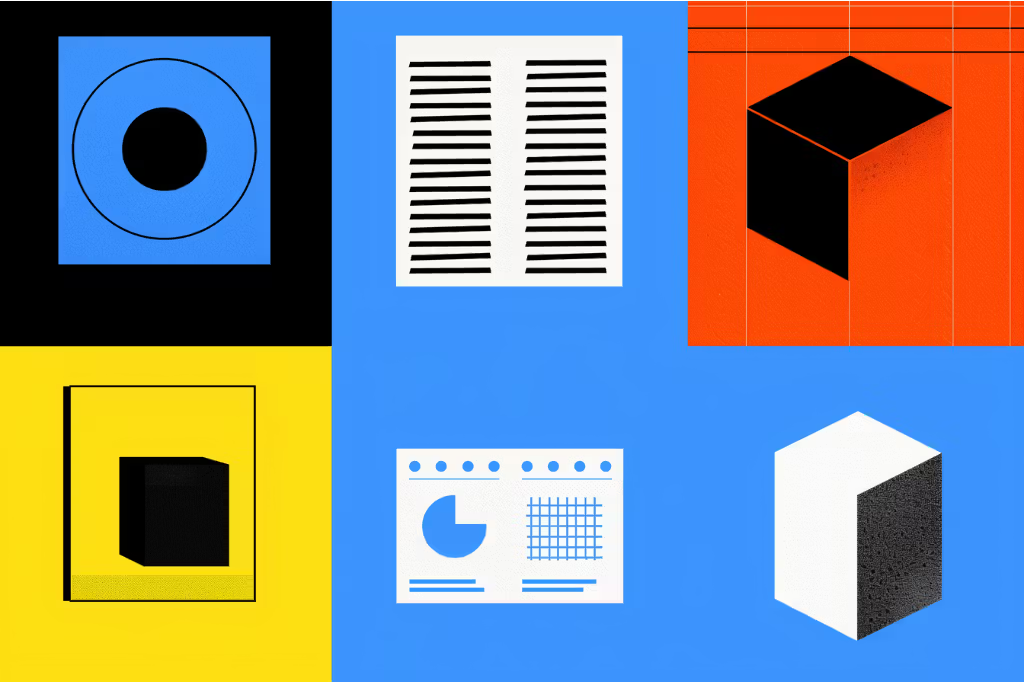7 Minimum Viable Product Examples to Inspire You to Stop Preparing and Start Doing

The pressure to be an "expert" is a trap. It convinces you that you need a perfect, feature-rich product before you can launch. It whispers that you need one more course, one more book, one more certification before you're "ready." This is the single biggest lie that keeps passionate creators from sharing their prototype.
What if the world's most successful brands started not with perfection, but with a simple, messy, and public first step? They didn't wait for permission. They launched a Minimum Viable Product (MVP)—a raw, core version of their idea designed to solve one problem and, more importantly, to start a conversation.
An MVP isn't about having all the answers. It's about having the courage to ask the right questions and being willing to learn in front of an audience. It's the ultimate act of "Documentation over Creation."
This guide isn't a list of flawless case studies to intimidate you. It's a collection of inspiring, often surprisingly simple, user feedback methods. Here are some minimum viable product examples that focus on user experience, which prove you have everything you need to start today. We'll break down how platforms like Dropbox, Zappos, and Buffer used scrappy, imperfect MVPs to build empires.
You'll discover:
- The Real Problem & The "Good Enough" Solution: How they identified a core pain point and launched the simplest possible thing to address it.
- The Anti-Expert Strategy in startup culture: Why their "imperfect" approach was their greatest strength, allowing them to build community and validate their idea without wasting years in "preparation mode."
- Actionable Takeaways for the Non-Expert: Practical, replicable tactics you can use to launch your own MVP, even if you feel you're "not ready."
Forget the myth of the perfect launch. It's time to embrace the power of starting now.
1. Dropbox: The MVP That Was Just a Video
The Problem with user feedback in product development: People needed to access their files across multiple devices, but syncing was a technical nightmare. Building a fully functional, bug-free file-syncing service was a massive, expensive undertaking.
The "Good Enough" MVP example: Instead of building the actual product, founder Drew Houston did something radically simple: he made a 3-minute video. The video walked through the intended functionality of Dropbox, demonstrating how seamless file syncing would work. He narrated it himself, filled it with in-jokes for his target audience (early tech adopters on Digg), and showed a product that didn't actually exist yet.
The Anti-Expert Strategy: This is the essence of iteration in product development. "Authenticity over Authority." Houston didn't pretend to have a flawless product. He shared his vision. He wasn't selling a finished solution; he was inviting people to join him on the journey. The video was a conversation starter, not a sales pitch. It tested the single most important assumption: Do people even want this?
Key Takeaway: Iterate based on user experience. Your MVP doesn't have to be a product. It can be a demonstration. A simple video, a blog post, or a webinar explaining your idea can validate demand before you write a single line of code. It’s about sharing your journey, not presenting a perfect outcome.
2. Zappos: The "Concierge" MVP
The Problem: In 1999, people were sceptical about buying shoes online. They couldn't try them on, and the assumption was that no one would take the risk.
The "Good Enough" MVP: Founder Nick Swinmurn didn't build a massive e-commerce platform or invest in a warehouse full of inventory. He created a "Concierge" MVP. He built a very basic website with pictures of shoes from local stores. When a customer placed an order, he would physically go to the store, buy the shoes, and ship them himself.
The Anti-Expert Strategy: This is "Progress over Perfection" in its purest form. Swinmurn acted as a human-powered backend. He didn't have the automated systems, the inventory, or the logistics figured out. He focused on one thing: proving that people would buy shoes online if the experience was right. He learned directly from his first customers, manually fulfilling each order and understanding their pains and desires.
Key Takeaway: You can be the product. Manually deliver a service to your first few early adopters to prove your concept. This hands-on approach provides invaluable insights and builds deep relationships, turning your first users into a true community.
3. Buffer: The Landing Page MVP
The Problem: Social media users wanted to schedule their posts in advance, but there was no simple tool for doing so.
The "Good Enough" MVP: Before building anything, co-founder Joel Gascoigne created a simple two-page website. The first page described what Buffer would do and invited people to sign up with their email if they were interested. When they did, they were taken to a second page that said, "Thanks! We're not quite ready yet, but you're on the list." He later added a pricing page between these two steps to see if people would be willing to pay.
The Anti-Expert Strategy: This MVP wasn't a product; it was a question. Gascoigne didn't pretend to have a finished tool. He openly admitted he was just testing an idea. This is "Questions over Answers." He wasn't providing a solution; he was asking his audience, "Is this a problem for you? And is it a problem worth paying for?" The email list he built became his first group of beta testers and the foundation of his community.
Key Takeaway: Your MVP can be a simple landing page. Use tools like Carrd, Webflow, or Mailchimp to create a "coming soon" page that gauges interest. The goal isn't to launch a product; it's to launch a conversation and build a community around a shared problem.
4. Airbnb: Using Their Own Apartment as the MVP
The Problem: During a major design conference in San Francisco, all the hotels were booked, leaving attendees without a place to stay.
The "Good Enough" MVP: Founders Brian Chesky and Joe Gebbia didn't build a global booking platform. They took pictures of their own loft, threw three air mattresses on the floor, and created a simple website called "AirBed & Breakfast." Their MVP was their own apartment. They hosted their first three guests themselves, acting as both hosts and concierges.
The Anti-Expert Strategy: This is "Your Journey is Your Content." The founders didn't have a grand business plan; they had a personal problem they were trying to solve. They documented their process, learned from their first guests, and used that direct feedback to shape the company's future. They weren't experts in hospitality; they were just people willing to share their space.
Key Takeaway: Start with what you have. Your own experience, your own home, your own knowledge can be your first product. You don't need to look for a market; you can be the market. Solve your own problem first and document the journey.
5. Groupon: The WordPress Blog MVP
The Problem: Businesses wanted to attract new customers with group discounts, but there was no easy way to coordinate them.
The "Good Enough" MVP: Groupon didn't start as a complex deal engine. It began as a simple WordPress blog called The Point. The founders would manually post a new deal each day. If enough people signed up, they would manually generate PDF coupons and email them to the early adopters. It was clunky, labour-intensive, and completely unscalable.
The Anti-Expert Strategy: This approach rejected "perfection paralysis." The founders knew the manual process was unsustainable, but it didn't matter. It was the fastest way to test their core idea: Will people buy things this way? They focused on getting to the first transaction as quickly as possible, embracing the messy, manual work to learn what their customers truly valued.
Key Takeaway: Use existing, simple tools to launch your idea. A blog, a newsletter, or a simple spreadsheet can be your entire business at first. The goal is not to build a perfect system; it's to prove the core concept with the least amount of effort.
6. Pebble: The Kickstarter MVP
The Problem: Smartwatches existed, but they were clunky and had poor battery life. The founders of Pebble had a vision for a simple, e-paper smartwatch, but lacked the funds to mass-produce it.
The "Good Enough" MVP: The Pebble team launched a Kickstarter campaign. Their MVP was not the watch itself, but the promise it represented. They used compelling mockups, a clear description of the value proposition (a customizable, long-lasting watch), and a video to sell their vision. The campaign served as a pre-order system, validating market demand and simultaneously funding production for the startup.
The Anti-Expert Strategy: This is about "Building Community, Not Just Followers." The Kickstarter campaign did more than raise money; it created a passionate community of backers who felt like they were part of the journey. These early supporters became Pebble's most vocal advocates, providing crucial feedback throughout the development process.
Key Takeaway: Your MVP can be a pre-sale. Use platforms like Kickstarter or simply take pre-orders via your website to validate that people are willing to pay for your solution before you build it. This transforms customers into co-creators.
7. Product Hunt: The Email List MVP
The Problem: Ryan Hoover wanted a single place to discover the best new tech products every day.
The "Good Enough" MVP: Product Hunt didn't start as the complex, community-driven site it is today. It began as a simple email list, created using a tool called Linkydink. Hoover invited a few dozen friends to contribute links to new products they found. He would then curate the best ones and send out a daily digest. That was it.
The Anti-Expert Strategy: This is the ultimate example of starting small and simple. Hoover didn't pretend to be an authority on tech; he positioned himself as a curious curator. He wasn't building a platform for an audience; he was building a community with his friends. The initial version focused on connection and shared discovery, rather than features and code.
Key Takeaway: The simplest version of your idea is often the best place to start. What is the absolute minimum you need to provide value? Could it be a newsletter? A private chat group? A curated list? Start there, and let your community guide the evolution.
Your Turn: Stop Preparing and Start Your Journey
These stories share one powerful truth: You don't need to be an expert to begin.
The founders of these iconic companies didn't have all the answers. They didn't have perfect products. They had the courage to start a conversation, to learn in public, and to build a community around a shared journey.
Your MVP is your first step, not your final destination. It's your permission slip to stop preparing and start iterating on your MVP example. Doing.
- What is the simplest thing you can share? A video? A blog post? A simple landing page?
- Who can you share it with? Start with your friends, your colleagues, or a small online group.
- What is the one question you need to answer? "Does anyone care about this product development strategy?"
Stop waiting for the "right time" or the "perfect product." The world doesn't need another expert. It needs your unique perspective, your authentic journey, and your courage to start right where you are.
Your journey is your content. Just get started.
You don’t need to know it all — just show up.
If you’ve been stuck waiting to feel “ready,” this is your sign. You don’t need a polished plan or a perfect offer. You just need to start documenting the journey.
Short heading goes here
Lorem ipsum dolor sit amet, consectetur adipiscing elit.











Lorem ipsum dolor sit amet, consectetur adipiscing elit. Suspendisse varius enim in eros elementum tristique. Duis cursus, mi quis viverra ornare, eros dolor interdum nulla, ut commodo diam libero vitae erat. Aenean faucibus nibh et justo cursus id rutrum lorem imperdiet. Nunc ut sem vitae risus tristique posuere.
Lorem ipsum dolor sit amet, consectetur adipiscing elit. Suspendisse varius enim in eros elementum tristique. Duis cursus, mi quis viverra ornare, eros dolor interdum nulla, ut commodo diam libero vitae erat. Aenean faucibus nibh et justo cursus id rutrum lorem imperdiet. Nunc ut sem vitae risus tristique posuere.